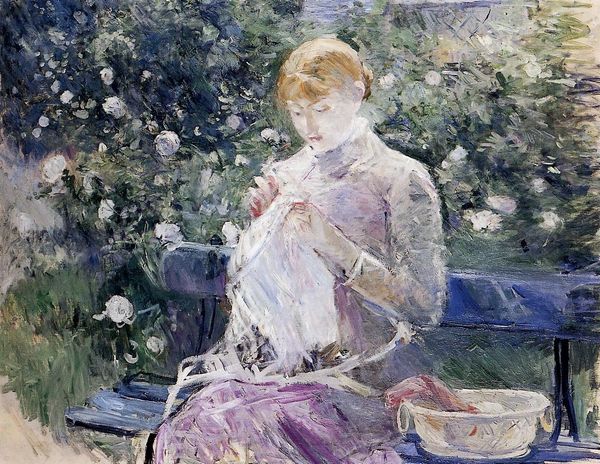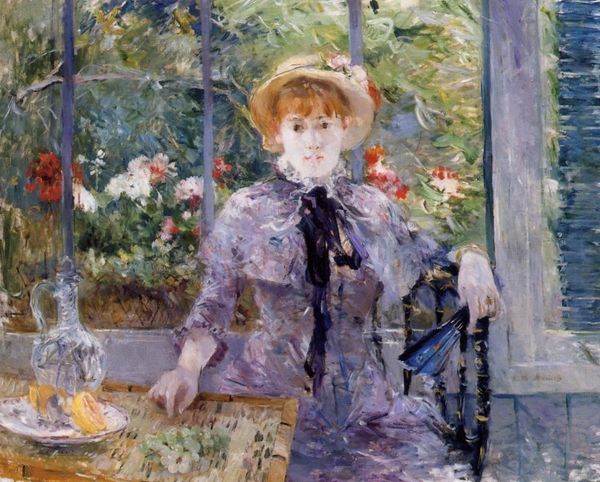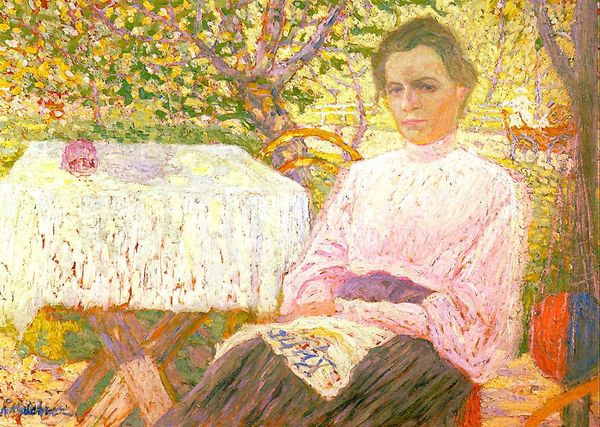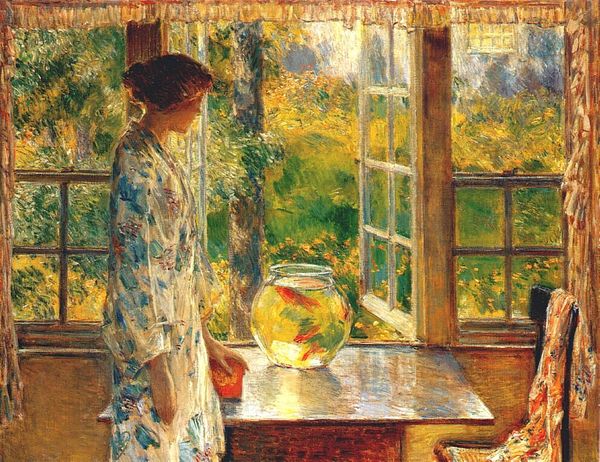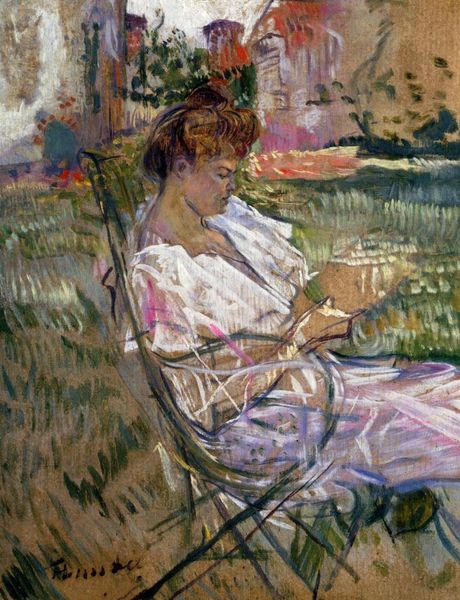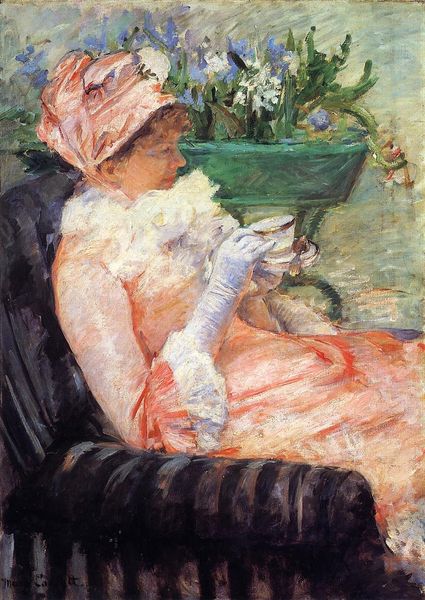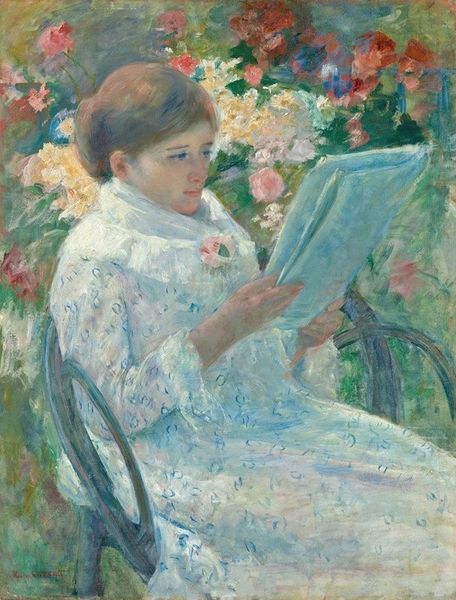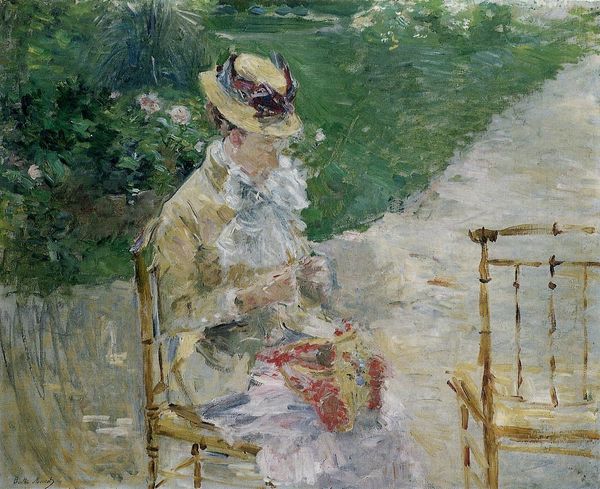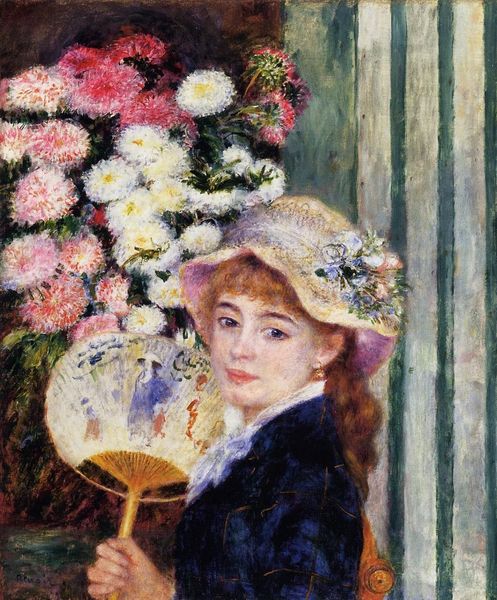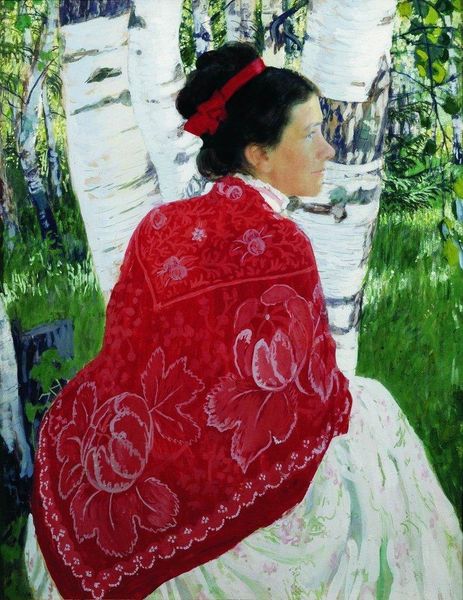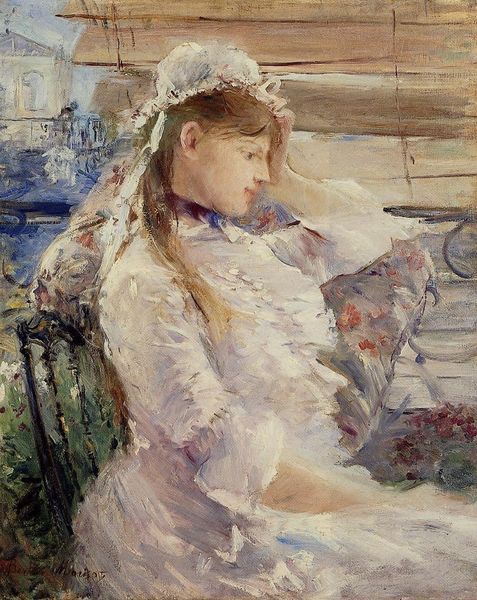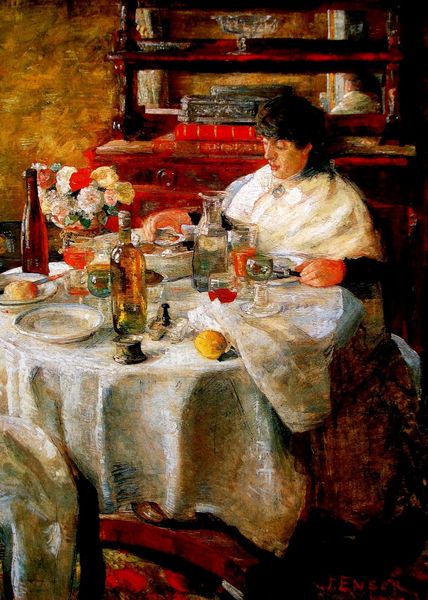
painting, plein-air, oil-paint, impasto
#
portrait
#
painting
#
impressionism
#
plein-air
#
oil-paint
#
landscape
#
oil painting
#
impasto
#
intimism
#
genre-painting
Copyright: Public domain
Editor: We're looking at Mary Cassatt’s "Lydia Crocheting in the Garden at Marly," an oil painting from 1880. It feels very…domestic, very focused on a woman’s interior life, even though she’s outside. What's your take on this piece? Curator: Well, you've touched on something crucial. Cassatt, though part of the Impressionist movement, distinguishes herself by focusing on the social and cultural sphere of women, especially in the late 19th century. She wasn’t just painting light and color, but also exploring the confined, yet privileged, spaces of bourgeois women. Consider how that garden, a symbol of leisure, is also a kind of boundary. Editor: A boundary? How so? Curator: Think about the limited roles available to women then. The garden represents a private, cultivated world, separate from the public, professional sphere dominated by men. The act of crocheting itself is indicative. It's domestic, private, and productive in a very specific, controlled way. Is she crafting something for her home or family, something of use, but not public value? Editor: That’s a compelling point. It is beautiful, the light and brushwork are very Impressionist, but it is also kind of… a commentary on the gilded cage? Curator: Exactly. Cassatt’s work offers a window into the complex social dynamics of her time. While the Impressionists often aimed for objective renderings, Cassatt subtly imbued her scenes with the realities of women's lives. She uses this soft domestic scene to communicate the woman's position. Editor: So it's not *just* a pretty picture of a woman in a garden. There's a critical edge. I definitely see that now. Thanks for helping unpack that! Curator: My pleasure. Thinking about art as social commentary broadens our understanding. It's always worthwhile to consider who gets represented, how they're represented, and what that representation tells us about the culture that created it.
Comments
No comments
Be the first to comment and join the conversation on the ultimate creative platform.
